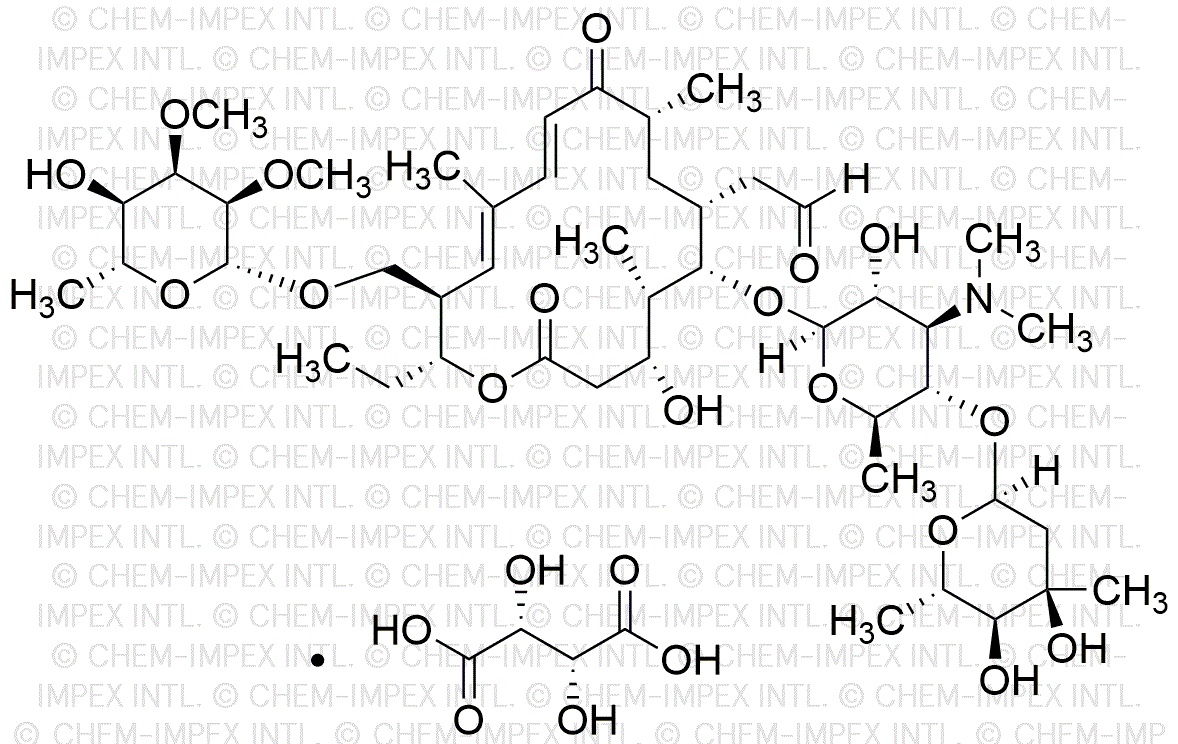Tylosin tartrate is widely utilized in research focused on
- Veterinary Medicine: Commonly used as an antibiotic in livestock to treat and prevent bacterial infections, enhancing animal health and productivity.
- Pharmaceutical Development: Serves as a model compound in drug formulation studies, helping researchers understand the pharmacokinetics and efficacy of similar antibiotics.
- Food Safety: Employed in studies assessing antibiotic residues in animal products, ensuring compliance with food safety regulations and consumer health standards.
- Biotechnology: Utilized in the production of recombinant proteins, where its antibiotic properties help maintain a sterile environment during cell culture processes.
- Research on Antimicrobial Resistance: Acts as a key compound in studies aimed at understanding and combating antibiotic resistance, providing insights into the effectiveness of existing antibiotics.
General Information
Properties
Safety and Regulations
Applications
Tylosin tartrate is widely utilized in research focused on
- Veterinary Medicine: Commonly used as an antibiotic in livestock to treat and prevent bacterial infections, enhancing animal health and productivity.
- Pharmaceutical Development: Serves as a model compound in drug formulation studies, helping researchers understand the pharmacokinetics and efficacy of similar antibiotics.
- Food Safety: Employed in studies assessing antibiotic residues in animal products, ensuring compliance with food safety regulations and consumer health standards.
- Biotechnology: Utilized in the production of recombinant proteins, where its antibiotic properties help maintain a sterile environment during cell culture processes.
- Research on Antimicrobial Resistance: Acts as a key compound in studies aimed at understanding and combating antibiotic resistance, providing insights into the effectiveness of existing antibiotics.
Documents
Safety Data Sheets (SDS)
The SDS provides comprehensive safety information on handling, storage, and disposal of the product.
Product Specification (PS)
The PS provides a comprehensive breakdown of the product’s properties, including chemical composition, physical state, purity, and storage requirements. It also details acceptable quality ranges and the product's intended applications.
Certificates of Analysis (COA)
Search for Certificates of Analysis (COA) by entering the products Lot Number. Lot and Batch Numbers can be found on a product’s label following the words ‘Lot’ or ‘Batch’.
*Catalog Number
*Lot Number
Certificates Of Origin (COO)
This COO confirms the country where the product was manufactured, and also details the materials and components used in it and whether it is derived from natural, synthetic, or other specific sources. This certificate may be required for customs, trade, and regulatory compliance.
*Catalog Number
*Lot Number
Safety Data Sheets (SDS)
The SDS provides comprehensive safety information on handling, storage, and disposal of the product.
DownloadProduct Specification (PS)
The PS provides a comprehensive breakdown of the product’s properties, including chemical composition, physical state, purity, and storage requirements. It also details acceptable quality ranges and the product's intended applications.
DownloadCertificates of Analysis (COA)
Search for Certificates of Analysis (COA) by entering the products Lot Number. Lot and Batch Numbers can be found on a product’s label following the words ‘Lot’ or ‘Batch’.
*Catalog Number
*Lot Number
Certificates Of Origin (COO)
This COO confirms the country where the product was manufactured, and also details the materials and components used in it and whether it is derived from natural, synthetic, or other specific sources. This certificate may be required for customs, trade, and regulatory compliance.


